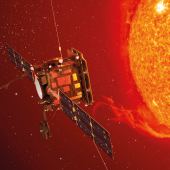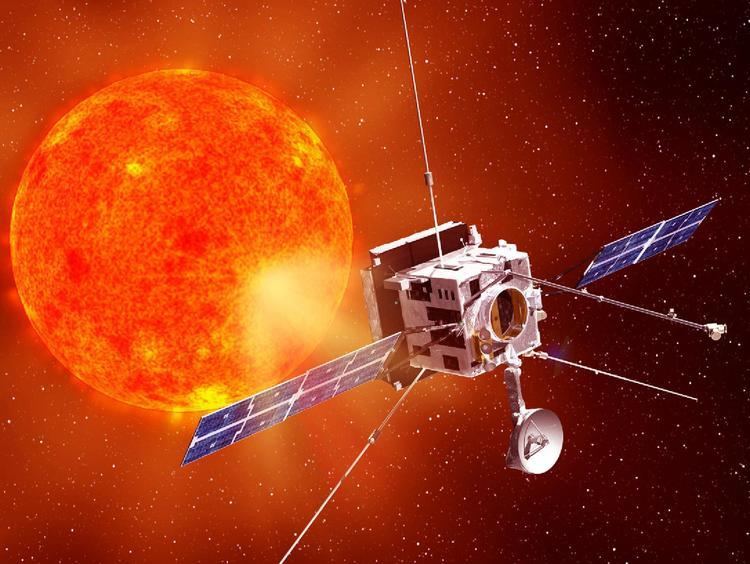Payload mass ~190 kg (420 lb) | Launch mass 1,800 kg (4,000 lb) Launch date October 2018 | |
Mission type Solar heliophysics orbiter Website sci.esa.int/solar-orbiter/ Mission duration 7 years (nominal)10 years (extended) Similar | ||
Esa solar orbiter animation 2012 hd
Solar Orbiter (SolO) is a planned Sun-observing satellite, under development by the European Space Agency (ESA). The mission will be launched with an Atlas V from the Cape Canaveral AFS in Florida in October 2018. SolO is intended to perform detailed measurements of the inner heliosphere and nascent solar wind, and perform close observations of the polar regions of the Sun, which is difficult to do from Earth, both serving to answer the question 'How does the Sun create and control the heliosphere?'
Contents
- Esa solar orbiter animation 2012 hd
- Solar orbiter scheduled to be launched in 2018
- Scientific objectives
- Payload
- Timeline and status
- References

The Solar Orbiter will make observations of the Sun from an eccentric orbit moving as close as ~60 solar radii (RS), or 0.284 astronomical units (AU), placing it inside Mercury's perihelion of 0.3075 AU and providing it with the closest ever views of the Sun.

Solar orbiter scheduled to be launched in 2018
Scientific objectives

The spacecraft will make a close approach to the Sun every five months. Around closest approach Solar Orbiter will be positioned for several days over roughly the same region of the solar atmosphere like geostationary satellites are stationed over particular spots on the Earth's surface, so the spacecraft will seem to 'hover' for a while over the Sun. Solar Orbiter will therefore be able to watch magnetic activity building up in the atmosphere that can lead to powerful solar flare or eruptions.

Researchers will also have the chance to co-ordinate observations with NASA's planned Solar Probe Plus mission which will make in situ measurements in the Sun's extended corona.

The objective of the mission is to perform close-up, high-resolution studies of the Sun and its inner heliosphere. The new understanding will help answer these questions:
Payload
Observation packages of baseline mission definitions:
